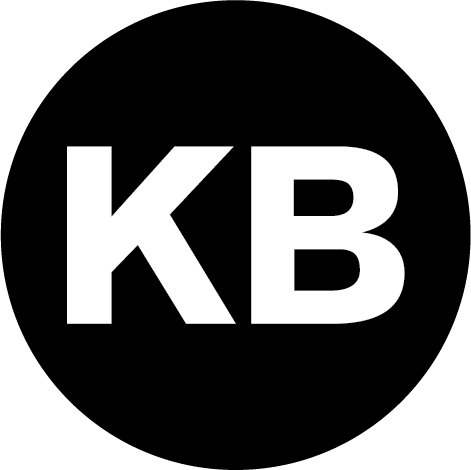The Insane Push to be Disruptive
How to make innovation inside your organization work
In every company and organization there is no shortage of brilliant ideas. We hired the best and brightest, afterall. So why is it so hard for companies and organizations to do innovation? Why is the word “innovation” being used so often in every context, staff meeting, or quarerly earnings call? What does leadership mean when they say “we need to build more innovative products and services?”
From my experiences consulting in some of the world’s largest companies, I think what leaders mean is disruptive innovation. You know, the iPhone, Facebook, Tesla, Uber, AirBNB — the case stories that become $1B companies in less than 24 months. This type of innovation brings a complete change to an entire market, and as you can imagine, it is the hardest and rarest to create. Not all innovation will be disruptive. It doesn’t need to be, either. Simply put, innovation happens when creativity can be brought to scale.
Here is a definition of creativity and innovation from Florian Rustler of Creaffective:
“Creativity is the ability to come up with something new that is useful; innovation is the introduction of something new into a market, an organization or a society that is useful.”
Disruptive innovation is just one type of innovation. Innovation can be incremental, similar to a technology or product that exists but makes a few features better for the customer. For example, a new model of a car or the next iPhone series. Innovation can also be semi-disruptive by introducing new, minor changes to a technology, process or business model. For instance, a car-sharing service like Car2Go is a new process for renting a car and introduces a new business model, but likely wont slow down or disrupt the sale of cars to consumers. Lastly, disruptive innovation is a new technology or business model that changes an entire market.
Disposable diapers is a simple example of disruptive innovation. Davila, Epstein, and Shelton note in their book Making Innovation Work that before disposable diapers were introduced in the 1970s by Johnson & Johnson, families used cloth diapers that needed to be properly laundered and many small companies offered diaper laundry as a service. When disposable diapers were introduced on the market, families no longer needed to use a laundry service and could easily dispose of used diapers and buy new diapers at local retail stores. This virtually wiped out the cloth diaper market and business model. Can you believe it? — diapers the disrupter of the family household of the 70’s, groovy.
When developing strategies for innovation in your teams, orgs, or businesses, it’s critical to focus on not just one type of innovation, instead on all three. Distruptive innovation is rare, hard, and very risky. Rustler notes, “The more disruptive the innovation the more likelihood of failure.” It can require a lot of time, resources from your team/organization, and skill to get it off the ground, however, the rewards can be game changing should you be successful. Semi-disruptive innovation can also be risky, but can keep a competitive advantage of being the “first” among competitors for a period of time (e.g. Fitbit Fitness Watches). Incremental innovation can also be a cash cow for an existing business (e.g. new Telsa models). Instead of only focusing on disruption, consider balancing your innovation projects with less risky, safer types of innovation for mid-long term success.
You might be thinking to yourself, ok great, got it, skip disruptive innovation and only focus on something more incremental because we can’t all be the next Steve Jobs.
That's not what I’m saying.
Disruptive innovation is not just disruptive to the market it can also wreak havoc inside of your existing organization. Most organizations are fine with incremental innovation to make small changes to an existing product or service. Even semi-distruptive innovation most companies can tolerate since it’s something compatible to an existing market or technology.
IN ORDER TO DO DISRUPTIVE INNOVATION AN ORGANIZATION MUST BE EQUIPPED WITH THE CONDITIONS TO FUNCTION UNDER EXTREME UNCERTAINTY. LEADERS WILL NEED TO DEVELOP A STRUCTURE THAT CAN ALLOW TEAMS TO EXPERIMENT AND LEARN. THIS ALSO REQUIRES BUILDING A CULTURE WHERE TEAMS CAN MOVE AT THE SPEED THEY NEED TO TRULY INNOVATE.
In the case for disruption everything is new. They can throw performance metrics out of whack, can send procurement into a frenzy, and can cause confusion among leadership or have an impact on productivity or revenue. I’ve heard leaders tell teams that their disruptive ideas were “too far from the core business,” “useless to our existing markets,” or just “never going to work.”
To really focus on creating disruption, teams need a different structure, new metrics, and the agency to learn and fail constantly. In order to allow teams to create and work on disruptive business models, services, or products the following ingredients need to exist for teams to thrive:
Small, lean teams no larger than 5–9 people who all have a clear skillset and role on the team at 100% dedication — no volunteer, side-project help
Autonomy over ideas and the ability to pivot or kill ideas based on the teams learning
The ability to safely (and legally) talk to real customers to validate problems, assumptions, and features
Special legal assistance when needed for patents, data protection, and other user data information (e.g. GDPR)
A set of metrics designed for learning, not performance or productivity
The ability to upskill or hire external technical or design expertise quickly
A budget that doesn’t require slow procurement processes so teams can move fast
Hardware and software that will let the teams get their work done and not get blocked by VPN firewalls
And most importantly, an ambitious leader willing to create the conditions inside the organization for teams to thrive.
Easier said than done! In another post I’ll share some learnings from my experiences trying to set the conditions to do this very thing inside of client organizations.

